Nambu
World: Type 14 Holster-JMCH Type I-A
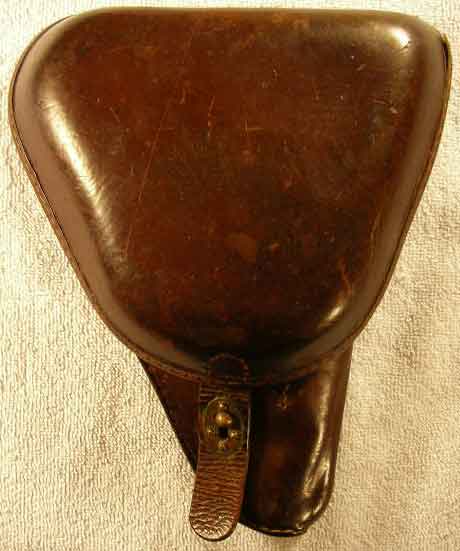
The earliest Type 14 holsters had oval strap
rings on the back. Generally early holsters had no striker pouch. For a long
time it was thought this was not added until battlefield experience showed that
striker breakage was a problem. However, some early holsters with oval rings do
have a striker pouch. It does not appear to be a retrofit, though one never
knows.
Here is a shot of the back. As you
can see, the strap rings are oval in shape. Later holsters had square rings.
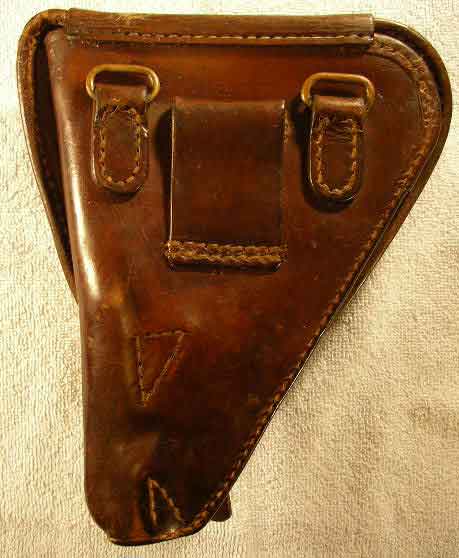
This shot shows it open. There are remnants of
some kind of paper tag on the inside of the flap (many holsters had tags with
their owner’s name). You can see the striker pouch to the right of the ammo
pouch.
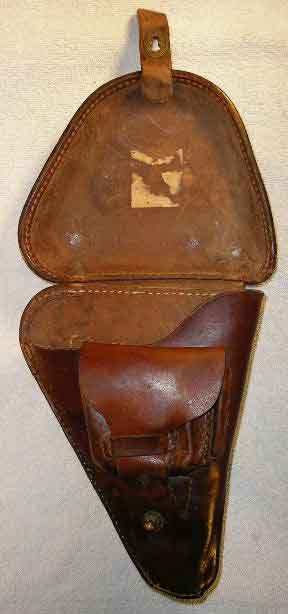
This close-up shows the striker
pouch better. Note that the ammo pouch flap is quite wide on this one—wider
than on the early Type III holster I have. On that one the flap does not cover
the striker pocket.

This shot shows the stitching around the pouch.
It does not seem to be a retro-fit.

The strap rings are not only oval in shape,
they are oval in cross-section.
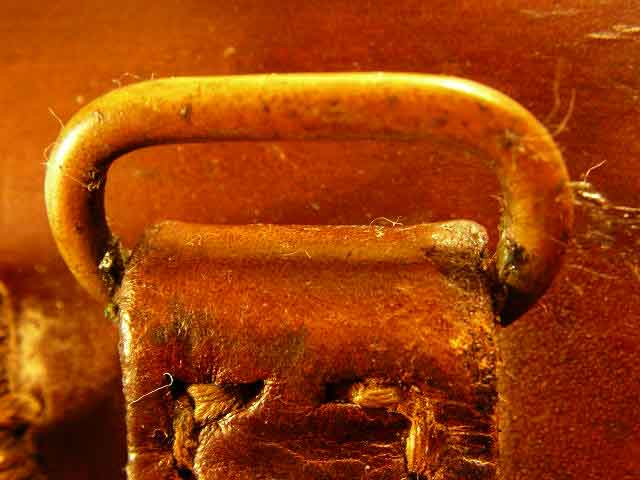
The remains of the paper tag inside the flap
appeared to cover at least one faint kanji stamp at the lower left.

After consulting an expert, I decided to gently
steam off the remaining bits of paper, since they had nothing on them anyway,
and see what other markings might lie underneath. The top marking is a kanji
“six”, probably referring to the year Showa 6, or 1931. This is around the time
they started to add the striker pouch and may explain how this holster
variation came to be: someone started adding the pouch but wanted to use up an
existing stock of oval rings. The marking in the middle is the “four
cannonballs” symbol of
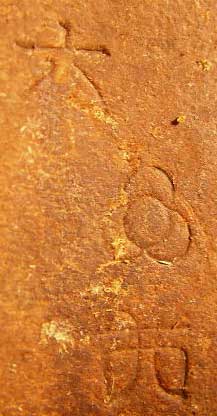
One thing I noticed in examining
this holster is that the top front corner of the flap seems to get the most
wear of any spot on the holster. I checked my other holsters and this seems to
be true of all of them. Even almost-new ones get scuffed here first. This makes
sense as it is wear the soldier’s arm would touch as he moved it back and
forth. Check this spot if you are buying any Type 14 holster. It’s where the
wear will likely show up.
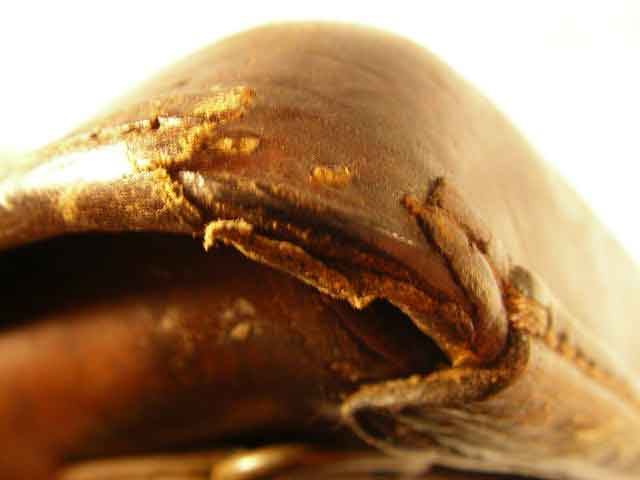
The leather hinge that joins the
clamshell flap to the body of the holster appears to have been re-stitched
along the bottom seam. Note the difference in the colour of the thread between
the top seam and the lower one.

Last updated: June 18, 2006. All contents are copyright Teri unless otherwise specified and may not
be used elsewhere in any form without prior permission.
Click here to go back to the Type 14
accessories page: t14accessories.htm
Click here to go back to the main page: jhg.htm